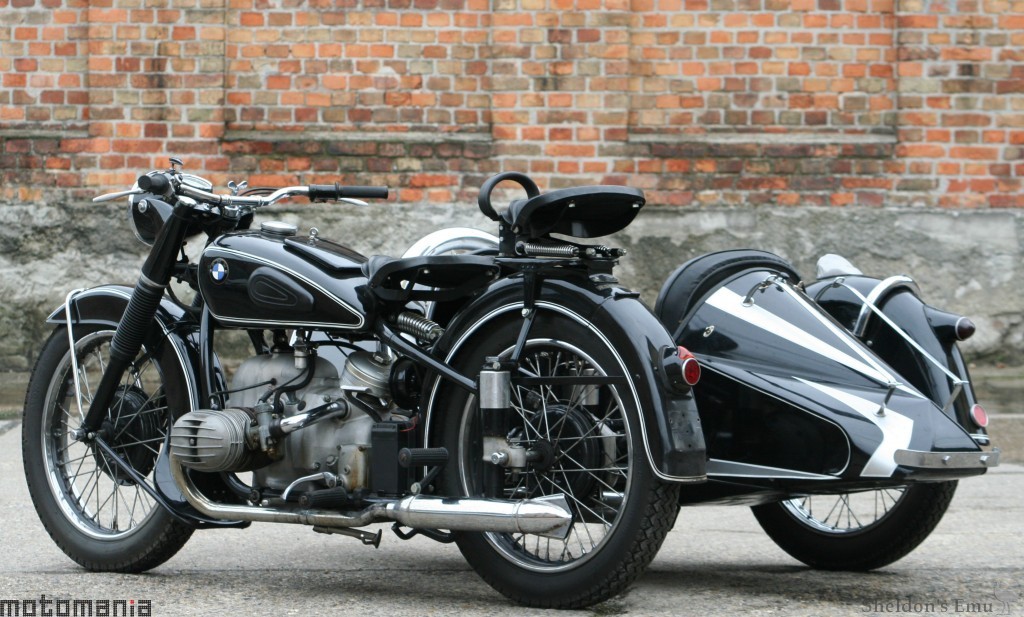



BMW were faced with rebuilding an almost totally destroyed factory following the end of hostilities in 1945, were banned from building motorcycles, cars or aero engines by the allies and were hampered by the scarcity of raw materials. Consequently their first postwar production vehicle, a bicycle, utilised the one material that was available in sufficient quantities, aluminium, extensively in its construction. As the allies relaxed their restrictions on what BMW were allowed to produce, the company introduced a single cylinder 250cc machine, the R24 in 1948 and followed it with an over-head valve, horizontally opposed twin displacing 500cc in 1950, typed the R51. The new machine featured plunger rear suspension and telescopic front forks and was followed in 1951 by a visually identical model displacing 594cc typed the R67. The enlarged model produced a claimed 26bhp at 5,500 rpm compared to the smaller machines 24bhp at 5,800 rpm resulting in an increase of top speed from 87 mph to 93mph. The R67 remained in production until 1956, undergoing two revisions during that time.
Sources include H&H Classic Auctions